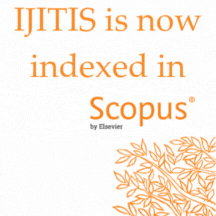Investigation of Damage from Radiological Dispersal Device
DOI:
https://doi.org/10.15157/IJITIS.2022.5.4.1052-1059Keywords:
Radiological dispersal device, assessment, simulation, radionuclides, radiation protection, CBRN protectionAbstract
Software platforms can be used to assess the radiological impact of potential releases of radionuclides. They are essential tools for use in controlling routine releases to the environment, as well as for planning the measures to be taken in case of accidental releases, for predicting their impact and for the probabilities of using a „dirty bomb”. The purpose of this development is: the impact study of Pasquill-Gifford atmospheric stability classes on radiological risks and decision-making. The risk of developing leukaemia was used as the target outcome. The correlation between leukaemia risk and changes in Pasquil‒Gifford stability classes was estimated since radioactive contamination from Radiological Dispersal Device in the lower atmospheric layers. The main expected contribution is provision of rapid and essential information on development as a result from radiological event.









